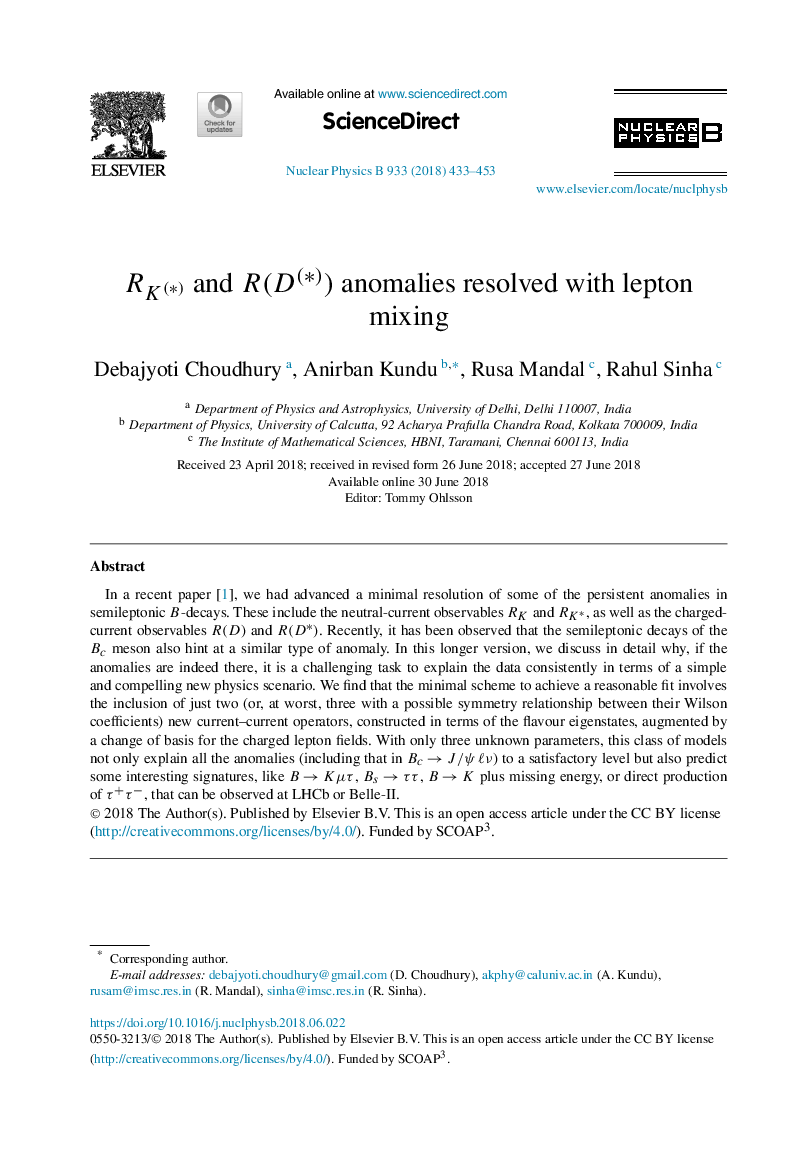| Article ID | Journal | Published Year | Pages | File Type |
|---|---|---|---|---|
| 8184857 | Nuclear Physics B | 2018 | 21 Pages |
Abstract
In a recent paper [1], we had advanced a minimal resolution of some of the persistent anomalies in semileptonic B-decays. These include the neutral-current observables RK and RKâ, as well as the charged-current observables R(D) and R(Dâ). Recently, it has been observed that the semileptonic decays of the Bc meson also hint at a similar type of anomaly. In this longer version, we discuss in detail why, if the anomalies are indeed there, it is a challenging task to explain the data consistently in terms of a simple and compelling new physics scenario. We find that the minimal scheme to achieve a reasonable fit involves the inclusion of just two (or, at worst, three with a possible symmetry relationship between their Wilson coefficients) new current-current operators, constructed in terms of the flavour eigenstates, augmented by a change of basis for the charged lepton fields. With only three unknown parameters, this class of models not only explain all the anomalies (including that in BcâJ/Ïâν) to a satisfactory level but also predict some interesting signatures, like BâKμÏ, BsâÏÏ, BâK plus missing energy, or direct production of Ï+Ïâ, that can be observed at LHCb or Belle-II.
Related Topics
Physical Sciences and Engineering
Mathematics
Mathematical Physics
Authors
Debajyoti Choudhury, Anirban Kundu, Rusa Mandal, Rahul Sinha,
